Tarahumara Popping Sorghum Crop: by Cameron Lee

Native to Northeastern Africa, sorghum is one of the world’s most important grains for human consumption and is a staple food for more than 500 million people in over 30 countries. It is extremely versatile and can also be used for alcohol production and foraging. In the nineteenth century, sweet sorghum syrup was used as a sugar-substitute by many small communities. By the late 19th century, it was a dominant crop in the South, reaching a peak production of 24 million gallons, later declining due to the rise in corn-based glucose crops. The stem of certain varieties can be used for building, fencing, weaving, broom making, and firewood. For industrial purposes, sorghum can be used as an alternative to vegetable oil, waxes, and dyes. Sorghum should be planted shortly after corn when the soil temperatures are around 60-65 degrees Fahrenheit, allowing the crop to be planted in the spring season and can be planted until mid-summer if the rains are late. Easily adaptable to various climates, it can be grown in a wide variety of soils and is resilient in droughts. However, it is still susceptible to pests, such as birds and bugs. In temperate regions, sorghum will typically be harvested annually, whereas, in the tropics, it is a perennial and able to be collected many times throughout the year using a technique called ratooning. The earliest evidence of sorghum was found as far back as 3,000 years ago and eventually spread to the drier regions of Africa. By 1,000 BCE, it was reported to be under cultivation in India. By the start of the Christian era, the crop spread along the coast of Southeast Asia and later to China.

Sorghum’s seemingly never-ending versatility saw the crop quickly adopted by many different cultures all over the world. In China, sorghum is a critical ingredient for the production of distilled beverages such as Maotai and kaoliang and was even featured in the 1987 film Red Sorghum. In southern Africa, sorghum is used to produce many different varieties of beer, even being included in their local version of Guinness. African sorghum beer tends to be a brownish-pink beverage with a fruity, sour taste, with its alcohol content varying between one and eight percent. South Africa also uses sorghum to make a stiff porridge – also known as mabele in Northern Sotho and brown porridge in English. The porridge can be served with soured milk known as maswi or with merogo (a mixture of boiled greens) similar to collard greens or spinach. In the Indian province of Uttara Karnataka, a variety of unleavened bread is usually made with sorghum and is a staple diet throughout parts of India. In the eastern Karnataka and the Rayalaseema area of the Andhra Pradesh region, a round flatbread called roti is made using sorghum and is the staple food for the communities who live there.
Sorghum is similar to maize in many characteristics in appearance and versatility; a cane-like grass that has the potential to grow up to six meters tall with large clusters of grains branched out from the stem. The individual grains are relatively small compared to other grains, typically only three to four millimeters in diameter. Depending on the variety cultivated, the colors of the grains can vary anywhere from a pale yellow to reddish-brown to a dark brown. The head of the sorghum is called a panicle, with spikelets paired with one another. Though they are ordinarily self-fertilized, they can also cross-pollinate. Before the 1940s, most grain sorghums grew up to five to seven feet tall, which created harvesting problems. Today, most varieties of sorghums have two or three dwarfing genes and are typically two to four feet tall and are usually called milo in the United States.
A specific variety known as broomcorn has had a major impact for storing, cleaning, and ornamental uses. It differentiates itself from other cultivars of sorghum in that it produces heads with fibrous seed branches that can grow as large as 36 inches long. Native to Central Africa, production of this crop then spread to the Mediterranean. Use of this crop would be especially prevalent during the Dark Ages. First described in Italy in the late sixteenth century, it would be introduced to the United States in the early eighteenth century. Initially grown as a garden crop, commercial production started to gain popularity by 1834. Illinois being the largest producer of broomcorn in the 1860s before ceasing in 1967. Broomcorn was commonly used for wreaths, swags, floral arrangements, baskets, autumn displays, and like the name suggests, brooms.

Highly versatile and adaptable, sorghum can be grown in harsher climates than other grains like maize and wheat while still producing an impressive yield and be used in numerous applications. Though the journey of sorghum to the Americas was relatively recent, within the past two hundred years, the crop was quickly adapted by groups that have been marginalized by outsiders. The Tarahumara, from which the variety shares its name, is one of the largest groups indigenous in North America, with a population of nearly 100,000 people, who have been cultivating this specific variety. Best known for their long endurance running, the majority of the Tarahumara are concentrated in the cool highlands of the Sierra Madre Occidental, Mexico. These highlands allow them access to lumber and land for sheep, cattle, and goats to graze. While others live in the tropical Las Barrancas or the gorges below the highlands, which allow the cultivation of fruit trees, tobacco, and other tropic-grown crops, many would migrate between the two regions depending on the seasons. Though the two areas produce different resources, both groups of the Tarahumara have similar lifestyles. As the lands around them were developed and modernized, the Tarahumara remained relatively uninfluenced by Mexican culture due to the harsh landscape of the highlands and their general reluctance to embrace outside influence. Their culture is bound to their physical environment and their way of life, the remoteness of their surroundings, making running their primary mode of transportation. Their diet was primarily vegetarian with meat usually only eaten on special occasions. Instead, they tend to use their livestock as a source of fuel and manure. They cultivate a variety of Mesoamerican crops such as corn, fruit, potatoes, beans, and squash. Occasionally supplementing their diet with hunting and gathering herbs, nuts, berries, cacti fruit, and seeds.
Gateway Greening offers Tarahumara Popping Sorghum seed packets for $1/each. You can purchase these packets at our office, Monday-Friday 8-4 PM or at our Demonstration Garden on Saturdays 9 am-noon.
References:
https://cals.arizona.edu/fps/sites/cals.arizona.edu.fps/files/cotw/Sweet_Sorghum.pdf

